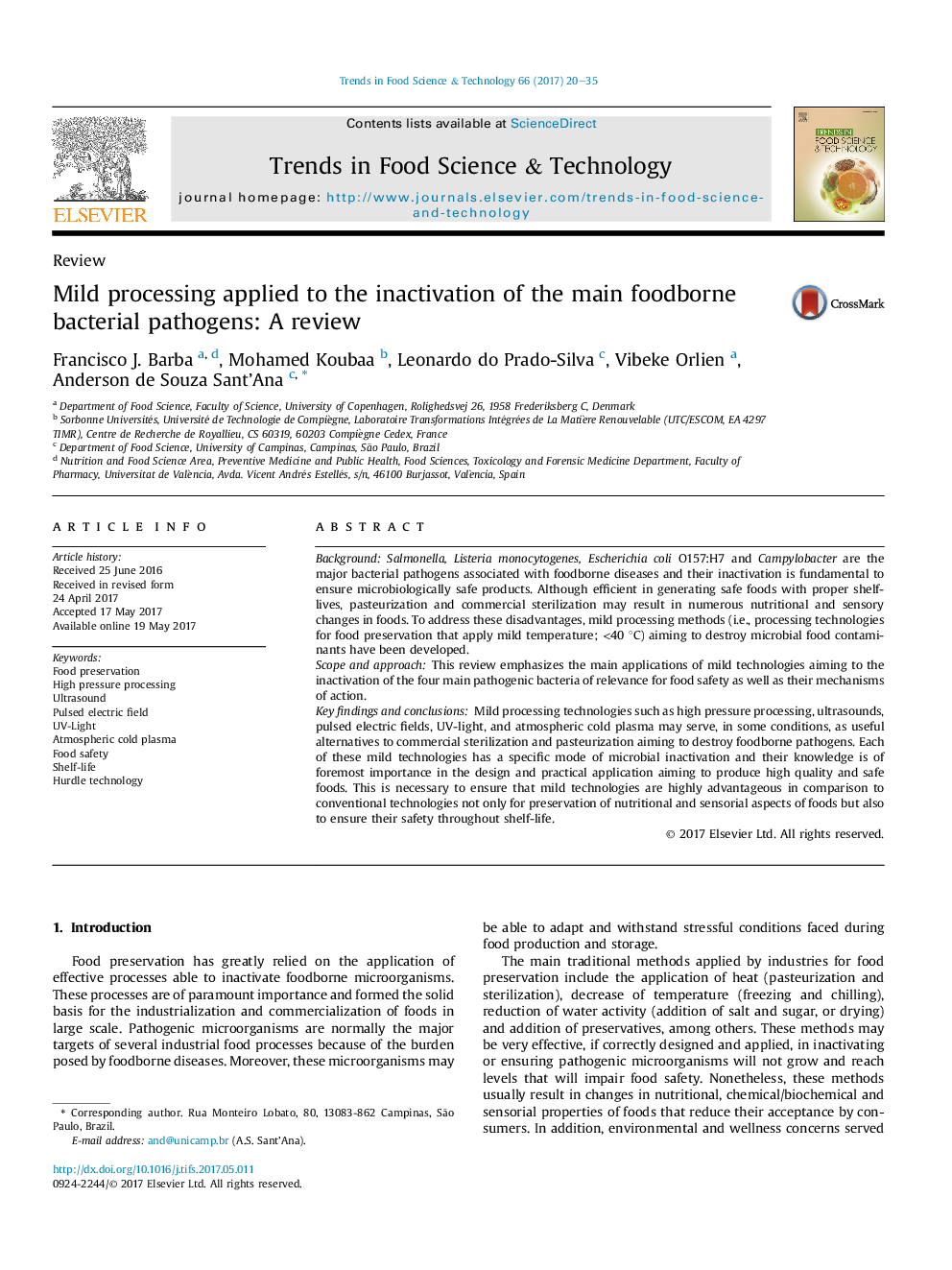| Article ID | Journal | Published Year | Pages | File Type |
|---|---|---|---|---|
| 5523699 | Trends in Food Science & Technology | 2017 | 16 Pages |
â¢The use of mild processing (MP) for inactivation of four main pathogens is reviewed.â¢The mechanisms and factors impacting microbial inactivation by MP are discussed.â¢The use of combined MP methods for inactivation of the main pathogens was discussed.â¢Hurdle technology concept seems to be mandatory for food preservation by MP methods.â¢Limitations and challenges in the application of MP methods are considered.
BackgroundSalmonella, Listeria monocytogenes, Escherichia coli O157:H7 and Campylobacter are the major bacterial pathogens associated with foodborne diseases and their inactivation is fundamental to ensure microbiologically safe products. Although efficient in generating safe foods with proper shelf-lives, pasteurization and commercial sterilization may result in numerous nutritional and sensory changes in foods. To address these disadvantages, mild processing methods (i.e., processing technologies for food preservation that apply mild temperature; <40 °C) aiming to destroy microbial food contaminants have been developed.Scope and approachThis review emphasizes the main applications of mild technologies aiming to the inactivation of the four main pathogenic bacteria of relevance for food safety as well as their mechanisms of action.Key findings and conclusionsMild processing technologies such as high pressure processing, ultrasounds, pulsed electric fields, UV-light, and atmospheric cold plasma may serve, in some conditions, as useful alternatives to commercial sterilization and pasteurization aiming to destroy foodborne pathogens. Each of these mild technologies has a specific mode of microbial inactivation and their knowledge is of foremost importance in the design and practical application aiming to produce high quality and safe foods. This is necessary to ensure that mild technologies are highly advantageous in comparison to conventional technologies not only for preservation of nutritional and sensorial aspects of foods but also to ensure their safety throughout shelf-life.
Graphical abstractDownload high-res image (336KB)Download full-size image
